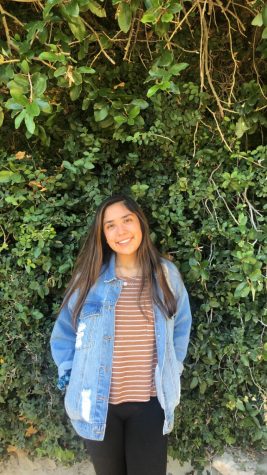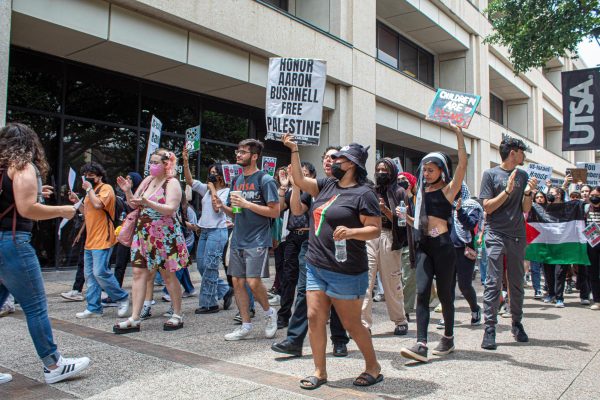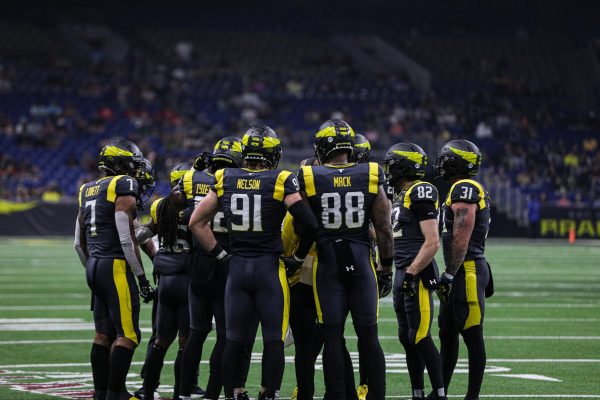John Peace Library continues its Heart of the Campus project
November 30, 2021
The “Heart of the Campus,” a project to renovate the third floor of the John Peace Library (JPL), is designed to create collaborative spaces where students can utilize library resources. Dean Hendrix, vice provost and university librarian, explained his vision for the third floor.
“This is a plan to design a student space around people — not books, not stacks, not things. We want dynamic spaces that are for people. We want to design spaces for information synthesis and at the same time, we would be improving technology like the WiFi coverage, specialized software, specialized computer and teaching labs that are up to the standard of the 21st century and create flexible spaces so students can collaborate more,” Hendrix said.
“We hope that this would be a signature space that campus tours would be able to show parents — a place that is active and thriving. In my opinion, the library is the heart of the campus, and we want to be able to show a place that is really a student and academic-owned space. I am really excited about this project, and I think the students will be pleasantly surprised by more study rooms, more tech, better WiFi and the light and airy feel to the library,” Hendrix said.
Hendrix said when he toured the library during his interview, he saw the third floor as an “homage to a 20th-century library” complete with outdated stacks and old books. He even described walking through the marketing section and finding textbooks from the ’60s. His observations culminated into adjusting libraries to fit 21st-century demands.
“We are not unique in book usage rapidly declining in the last 10 years. We have been adjusting to the digital world, and we saw it as a threat and also as an opportunity, and now this is just a phased way of moving UTSA forward,” Hendrix said.
The project is currently in its first phase of development. Crews continue to replace large concrete panels on the north and south portions of the building with large floor-to-ceiling window panels.
Phase Two includes a stack rebalancing or stacks reduction after which the department will analyze materials and discern their need to be on-campus based on their level of use. Included in Phase Two is stack shifting — stacks will be removed, spaces will be re-carpeted and new furnishings will be added.
Phase Three includes a 25-30% removal of on-site books while expanding the technology and collaborative space, what Hendrix calls Digital Maker Spaces. These areas include educational components giving students the opportunity to learn about the resources the library can provide.
“The things that students are going to be using in the workplace we want to be able to provide that,” Hendrix said. “If you look at workplaces now, there are more open floor plans and that’s what we are aspiring to on the collaborative side. Obviously, we need to have a quiet solo study space, but on the technological and collaborative side, we wanted to model a 21st-century workspace.”
The campus community will still have access to the books that are supposed to be removed in Phase Three via a collaboration with the Joint Library Facility, a venture between the A&M and UT systems.
“We are looking to cut two-thirds to three-fourths of the stacks that are low use, so of all of the collections that are assessed annually, about 3% are physical checkouts,” Hendrix said. “It’s a small percentage of our business, but the stacks take up 56% of useful space on the third floor. We just have to rebalance the space so that students can use this space optimally.”
The completion of the project is still unknown and according to Hendrix, the timeline is contingent on funding; however, according to his estimate, it is within four to five years.
“I am most excited about the Digital Maker Space; students are going to go through the critical thinking process and then create knowledge,” Hendrix said. “I believe that all of our students are scholars, and you go in collecting all of the information and synthesizing it into a product. That could be a video, it could be a speech; you are gathering this information and making those connections. We are giving UTSA students, who I have found to be incredibly resourceful in creating, the tools to open a wide world for them to create.”











